
Images: Easter at the Zoo!
Mine, All Mine
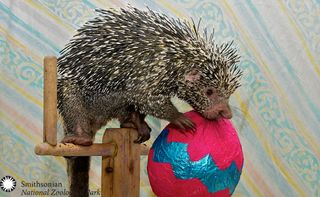
Residents of the Smithsonian National Zoo's Small Animal House got some sweet surprises ahead of the Easter holiday. Keepers prepared special "enrichment" treats for the animals, which can be snacks, toys or simply nicely-scented treats designed to provide a stimulating environment.
A prehensile-tailed porcupine guards a tasty treasure.
These nocturnal, tree-dwelling rodents, native to Central and South America, use their long tails for hanging and grasping.
Everyone Loves Flowers

A saki monkey checks out flowers that may hide a delicious treat.
The monkeys are native to the rainforests of South America, and spend most of their lives high in the trees, where they live in small groups and communicate with high-pitched cries.
Yummmmm
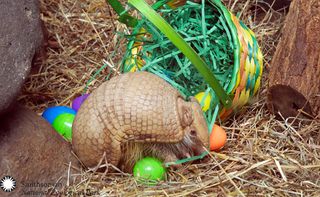
A southern three-banded armadillo nestles in among a pile of treats.
Another native of South America, these small, armored mammals use strong front claws to dig for termites and ants. When they are born, these armadillos are the size of a golf ball.
Living on the Edge
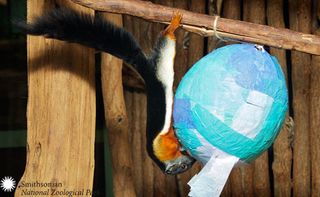
A prevost's squirrel excitedly inspects an outsize egg.
Sign up for the Live Science daily newsletter now
Get the world’s most fascinating discoveries delivered straight to your inbox.
Bird eggs are actually part of the regular diet for these strikingly-colored squirrels in their native habitat, lowlands and dense forests in Southeast Asia. Prevost's squirrels also eat fruit, nuts, seeds, flowers, and insects.
Found It!

Two degus investigate an Easter egg.
These Chilean rodents look like oversize gerbils, and grow to about 5 inches (13 centimeters) in length. If a degu is caught by the tail, it will sometimes escape by spinning until the skin comes loose.
What's This?
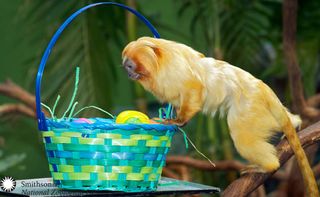
A golden lion tamarin curiously checks out an Easter basket.
These Brazilian monkeys live in family groups, and fathers and siblings help out with the little ones. They feed on fruit, insects and small vertebrates.
Very Interesting ...
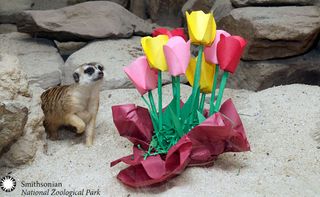
A meerkat checks out some new decorations.
These small mammals, native to southern Africa, are members of the mongoose family.
Work it, baby.
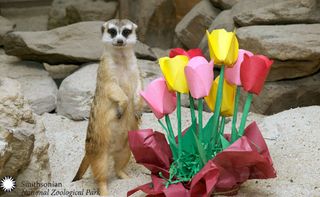
A meerkat poses with flowers that house some tasty snacks.
Meerkats live in large groups, and feed mostly on insects, but also eat small reptiles and even scorpions.
Hide and Seek
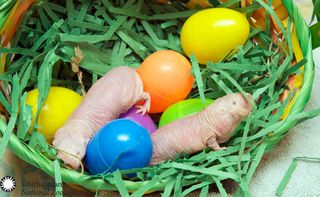
Two naked mole rats dive into an Easter surprise.
These rodents are more closely related to porcupines and guinea pigs than to moles or rats. They are one of only a handful of mammals whose social structure mimics that of bees or termites. A single breeding female, a queen naked mole rat, is attended by breeding males and a host of non-breeding soldier and worker mole rats.
Impressive Eggs

Naked mole rats spend virtually their entire lives in the darkness of their underground burrows. They're native to sub-Saharan Africa, and are known as "sand puppies" in local parlance.












